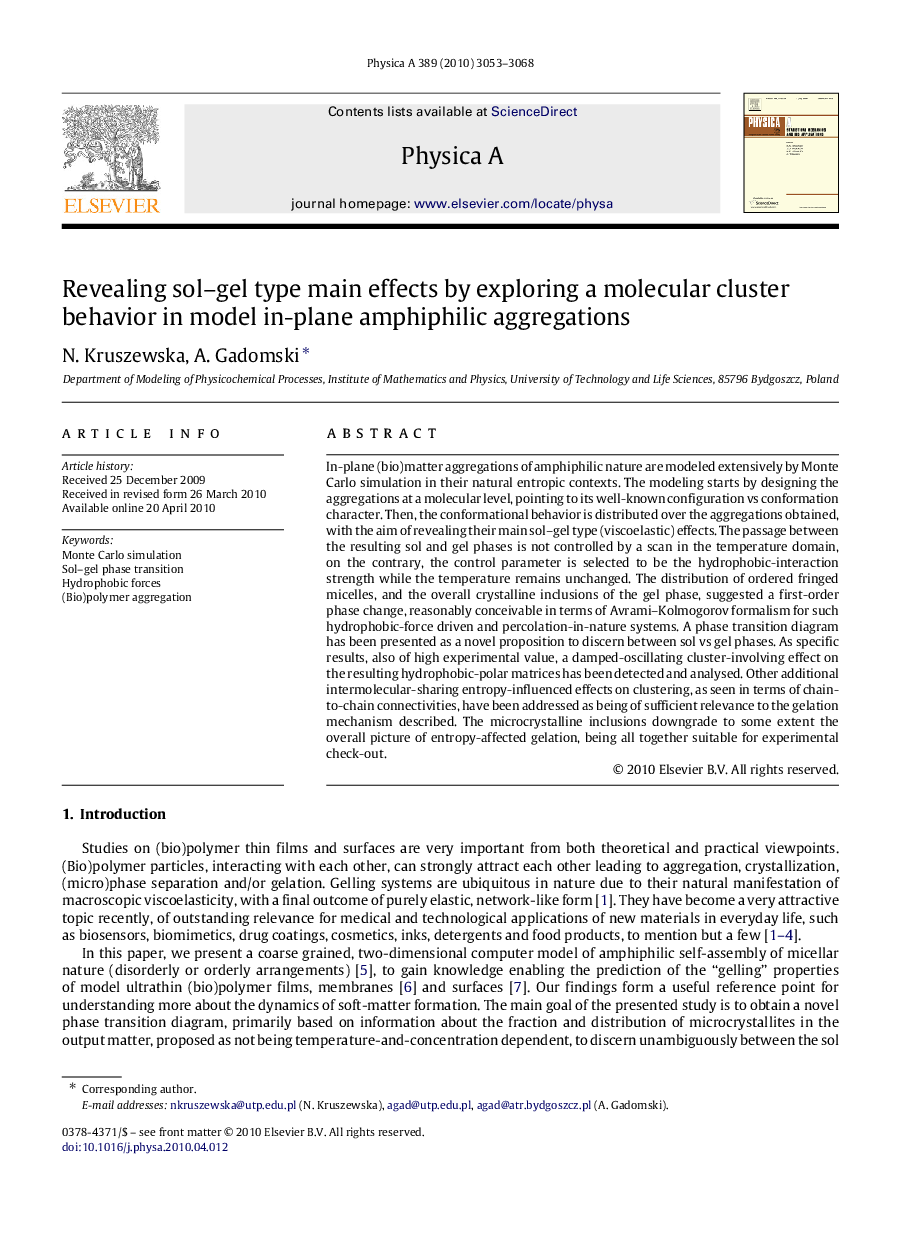| Article ID | Journal | Published Year | Pages | File Type |
|---|---|---|---|---|
| 978935 | Physica A: Statistical Mechanics and its Applications | 2010 | 16 Pages |
In-plane (bio)matter aggregations of amphiphilic nature are modeled extensively by Monte Carlo simulation in their natural entropic contexts. The modeling starts by designing the aggregations at a molecular level, pointing to its well-known configuration vs conformation character. Then, the conformational behavior is distributed over the aggregations obtained, with the aim of revealing their main sol–gel type (viscoelastic) effects. The passage between the resulting sol and gel phases is not controlled by a scan in the temperature domain, on the contrary, the control parameter is selected to be the hydrophobic-interaction strength while the temperature remains unchanged. The distribution of ordered fringed micelles, and the overall crystalline inclusions of the gel phase, suggested a first-order phase change, reasonably conceivable in terms of Avrami–Kolmogorov formalism for such hydrophobic-force driven and percolation-in-nature systems. A phase transition diagram has been presented as a novel proposition to discern between sol vs gel phases. As specific results, also of high experimental value, a damped-oscillating cluster-involving effect on the resulting hydrophobic-polar matrices has been detected and analysed. Other additional intermolecular-sharing entropy-influenced effects on clustering, as seen in terms of chain-to-chain connectivities, have been addressed as being of sufficient relevance to the gelation mechanism described. The microcrystalline inclusions downgrade to some extent the overall picture of entropy-affected gelation, being all together suitable for experimental check-out.
